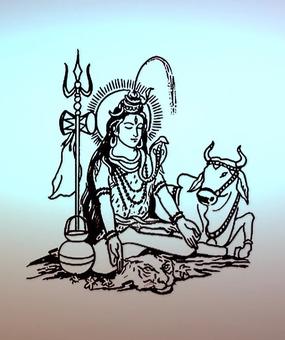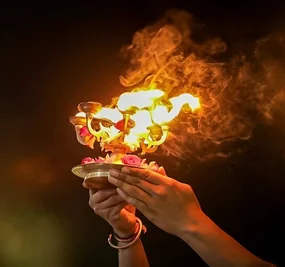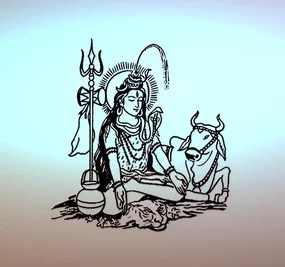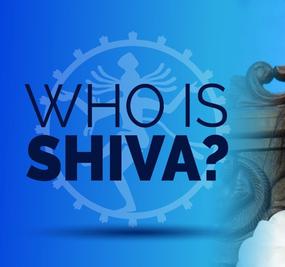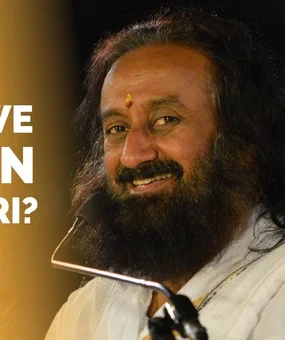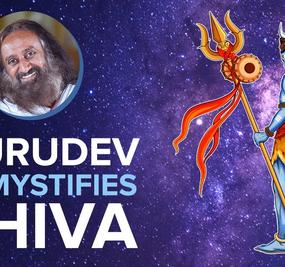
What is the meaning of Guru?
The word Guru comes from Gu, meaning darkness and Ru, light. The Guru is the one who leads us from darkness to light. In a worldly sense, Guru is an expert, a teacher who sheds light on a subject. We have had many Gurus right from our school days to the present times, as anybody who has passed on a particular knowledge to us is a Guru. On the spiritual path, Guru is an enlightened master who guides us from the ignorance of mundane existence to the light of Divinity. He is a realized soul. He is known as Satguru, the True Guru or the Guru who reveals the truth. The Advaita Guru Parampara beginning from Lord Shiva Himself is a lineage of enlightened masters who have passed on spiritual knowledge to us from time immemorial.
Is Guru a person?
Guru is not to be limited to a person. When looked at from the transcendental viewpoint, the word Gu in Guru stands for Gunateetha (beyond gunas) and Ru stands for Rupavarjita (beyond all forms). Guru is a principle transcending the gunas and forms. He is non-different from Shiva and our Self.
“A Guru desires nothing from you except your well-being and progress on the path! Life and the Guru are inseparable. The wisdom that allows you to differentiate between right and wrong is the Guru principle that resides in all.”
~ Gurudev Sri Sri Ravi Shankar
Lord Shiva is revered as the primordial Guru of the universe.
Who is Lord Shiva? Is Shiva a person?
Shiva was not a man who walked our planet. Lord Shiva is the supreme consciousness (Divinity) eternally present everywhere. He is present from every atom to the whole universe and beyond. When we talk of Lord Shiva as the first Guru, it is not the physical form. Lord Shiva as Guru is the Divine light that resides within everybody who brings enlightenment or knowledge. The whole expansive space in the universe is not void but is brimming with divine consciousness and this space contains all knowledge. This infinite consciousness is Shiva, the first Guru.
What is the significance of Dakshinamurthy?

In the Puranas, the Guru principle of Lord Shiva is symbolized as Dakshinamurthy (dakshina-amurthy).
This word dakshinamurthy has three words:
- Amurtha means that which is formless, and cannot be seen or expressed. Lord Shiva is the formless all-pervading divinity.
- Murthy (literally means an idol) is that which has a form and is visible.
- Daksha means skillful and capable.
It is difficult to express all the emotions. Sometimes, we express our emotions by offering a flower. There is nothing we can do to completely express our feelings, but we still make efforts. That is known as Dakshina, the skill. The formless infinite, the Amurtha that cannot be expressed is skillfully (Daksha) expressed through a form, a Murthy and is known as Dakshinamurthy.
“The Guru principle is so vital in life. The first guru is Dakshinamurthy, the embodiment of infinity woven so skillfully in the finite that the finite and infinite co-exist. There is an element of the guru in every human being. That wisdom in each one has to be invoked and awakened.”
– Gurudev Sri Sri Ravi Shankar
Lord Shiva is everything and everywhere, yet He comes in the form of a Guru. When the infinite manifests as the Guru, He is known as Dakshinamurthy.
From ancient times, the form of Guru Tattva (divine element or principle) has been represented as Dakshinamurthy. The Guru is not a person. It is an energy in the body of a Guru; that energy is called Dakshinamurthy. It is the Divine, omnipresent, infinite, guiding wisdom, which is un-manifested and yet manifests in all.
Depiction of Dakshinamurthy in Puranas
In the Puranas, Lord Shiva as Dakshinamurthy is portrayed as a young boy sitting in silence, with elderly disciples seeking knowledge. Lord Dakshinamurthy doesn’t speak a single word but all His disciples received the knowledge, and their questions disappeared. That means their energy spontaneously got uplifted in the presence of the supreme Guru. That is the Guru principle. The original Guru, from whom all knowledge and wisdom manifested, is revered as Dakshinamurthy.
Significance of symbols of Dakshinamurthy
Damru (small two-headed drum) – The first hand holds a damru that symbolizes sound.
Japaamala (rosary) – The same hand also holds a japamala, symbolizing meditation.
It indicates the transition from sound to a meditative state of mind.
Book – The second-hand holds a book that symbolizes knowledge.
Abhay mudra – An open palm facing outwards symbolizes that Dakshinamurthy is blessing its disciples to be fearless and courageous.
Chin mudra (the unity of consciousness) at times replaces Abhaya mudra in the Iconography. When Jivatma (individual self or soul) symbolized by the index finger meets Parmatma (universal self or consciousness), symbolized by the thumb, then the three Gunas (sattva, rajas and tamas) represented by the other three fingers balance and become distant.

Agni (Fire) – The fourth hand shows ‘Agni’, or fire which symbolizes enthusiasm. It also represents the present moment.
How does fire denote the present moment?
Fire can happen only in the present moment. Water can be kept in the past and used in the present moment. But, fire has to be only in the present moment. Thereby, Agni is always new and fresh. The Guru principle brings stillness to your monkey mind and leads you to the freshness of the moment. The Guru as Dakshinamurthy also cools down the heated situations in our life and ignites the fire of knowledge. The whole symbolism of Dakshinamurthy has many layers of meaning which are interesting and enlightening.
Apasmara rakshas – The Guru principle controls the demon representing laziness, diseases, and mental ailments, under its foot.
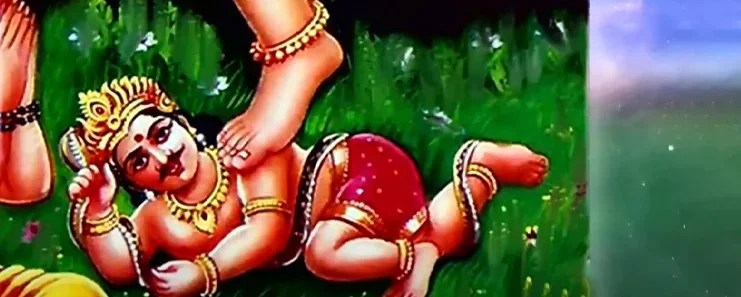
Why is the demon just controlled and not annihilated?
- If Apasmara is allowed freedom, he will attack people who acquire knowledge. Apasmara will get arrogant and the value of knowledge will diminish.
- If Apasmara dies, knowledge will dawn on people, but they may not still understand its value, and knowledge could get sidelined.
- So Apasmara is controlled but not killed to ensure that knowledge gets the right value and does not bring arrogance.
Why do we need knowledge?
Knowledge aids in controlling the demonic entities of life so that you can rise above ignorance. Hence, the Guru principle raises you above all sorrows, pains, griefs and problems. It uplifts the spirits of its disciples in all possible dimensions.
When disciples remember their Guru, all the demonic entities of life get controlled.
Dakshinamurthy shows that with skill and knowledge, you can control the demons of your life and attain the stillness of the Self within.
Summation
Lord Shiva as the Guru principle is present in everyone. You need to relax, connect and meditate so that the Guru principle dawns in you. The Guru principle uplifts you to a higher state of consciousness and prevents you from getting caught in the dualities of good and bad in the world. It encourages you to acknowledge, and move on so that you remain untouched. This is the essence of the message behind Dakshinamurthy (Lord Shiva), the first Guru of the universe.






